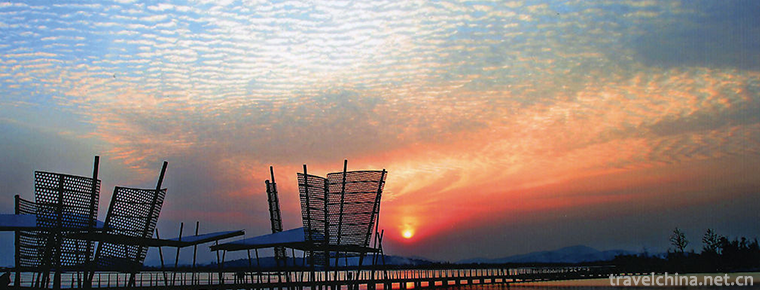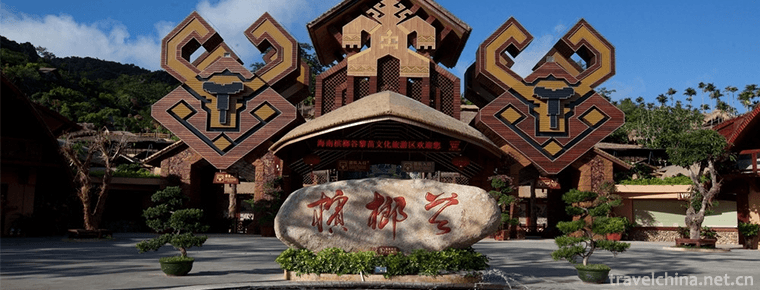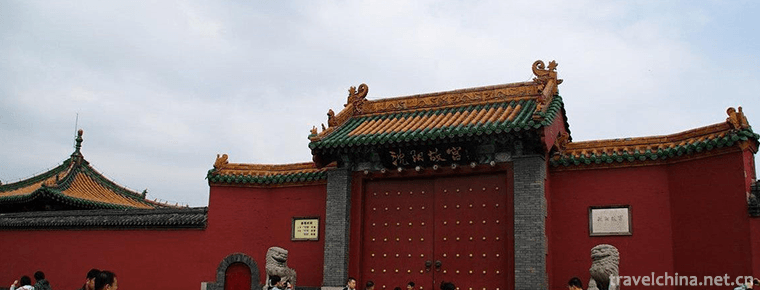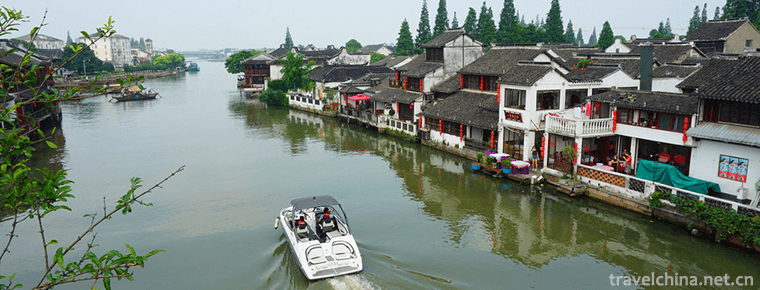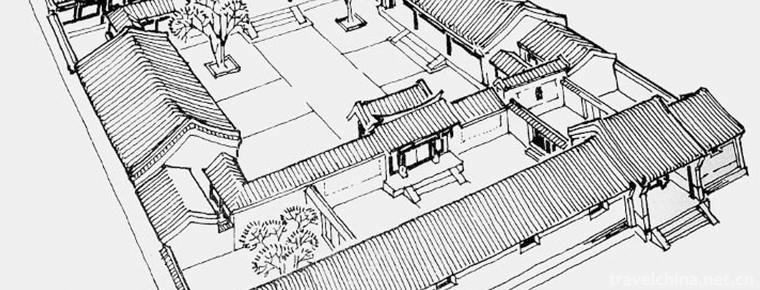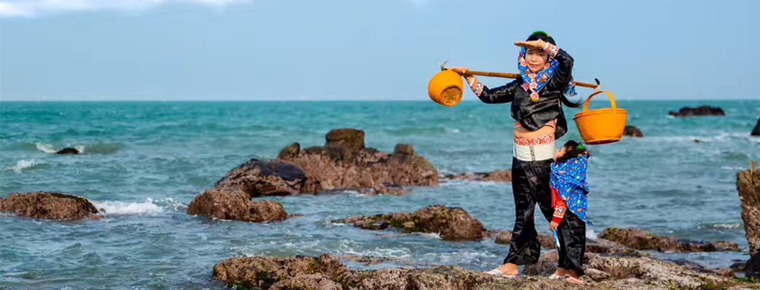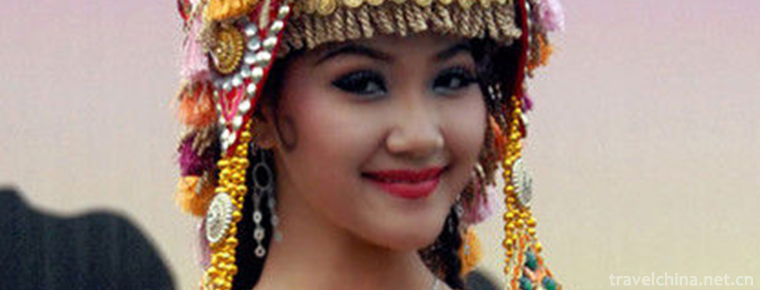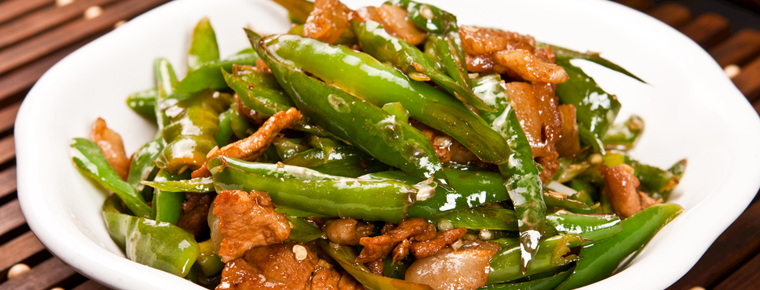Tianjin Dule Temple
Tianjin Dule Temple
Dule Temple, also known as the Great Buddha Temple, is located in Jizhou District, Tianjin, China. It is one of the three remaining temples of Liao Dynasty in China and one of the famous ancient buildings in China. Although Dule Temple is a famous temple for thousands of years, the history of the temple is very uncertain. Its origin can not be traced back to the first ten years of Zhenguan (636 A.D.).
Dule Temple covers a total area of 16,000 square meters, three broad mountain doors, four deep, two upper and lower layers, with a flat dark layer in the middle, with a height of 23 meters. The two oldest existing buildings in the temple, Shanmen and Guanyin Pavilion, were rebuilt in the second year (984 A.D.) by Saint Zongtong of Liao Dynasty. In the nineteenth year of the Republic of China (1930), Dule Temple was famous both at home and abroad for being investigated and published by Japanese scholar Guan Yezhen and Chinese scholar Liang Sicheng.
Dule Temple is a national AAAA scenic spot, the first batch of national key cultural relics protection units, and the special protection grade historic buildings approved by Tianjin Municipal People's Government.
Major attractions
Shanmen
The Mountain Gate is the main access to the temple, with three broad faces and two deep ones. The hall is made in the middle. The first two are two statues of Liao Dynasty's coloured clay sculptures of Kings of Diamonds, and the second two are coloured murals of the "Four Heavenly Kings" painted in the Qing Dynasty. The pillars and beams of the mountain gate are sturdy and the bucket arch is magnificent. The "rising" and "side foot" are obvious. The roof is the top of the Ludian Temple, with five ridges and four slopes, also known as the "Four-A-Dading". The Dule Temple Mountain Gate is the earliest existing Ludian Mountain Gate in China. Owl kisses at both ends of the main ridge are vivid and simple in shape, the original of Liao Dynasty. It is said that the plaque of the mountain gate is the subject of Yan Song.
Mural
Dule Temple murals mainly refer to the murals in Shanmen and Guanyin Pavilion. On the East and west walls of Shanmen, there are four images of Heavenly Kings, and on the walls around Guanyin Pavilion, there are images of Buddha, Arhats and providers.
Goddess of Mercy Pavilion
The main building, Guanyin Pavilion, is a three-storey wooden pavilion; because the second floor is a darkroom, and there are no eaves on it and the third floor is separated, so it looks like a two-storey building in appearance. The Pavilion is 23 meters high, surrounded by a waist eave and a sitting railing, with a single eave and a rest hill. Two clay statues of Guanyin Bodhisattva, 16 meters high, stand on the Xumi seat in the central cabinet, with their heads reaching the top of the third floor. Because there are ten small avatars on their heads, they are also called "eleven-sided avatars". His face is plump and kind, his shoulders droop, his trunk leans forward slightly, and his manner is dignified and motionless. Although it was made in Liao Dynasty, its artistic style is similar to that of the Tang Dynasty, and it is one of the largest clay Buddha statues in existence in China.
On both sides of the statue of Guanyin, there is a statue of Bodhisattva under threat. This is also the original sculpture of Liao Dynasty. The walls of Guanyin's excellence are full of coloured paintings. They are the statues of the sixteen Arhats and the statues of the Ming King with three heads, six arms or four arms. They are painted with mountains, clouds, water and secular themes. This is the work of a painter of the Ming Dynasty. It is well preserved, with clear pictures and bright colors. The Guanyin Cabinet is centered around the statue of Guanyin, with two rows of columns surrounded by bucket arches and beams erected on the pillars, on which wooden pillars, bucket arches and beams are erected to divide the interior into three layers so that people can admire the Buddha from different heights; the beams and panels are arranged around the statue, forming a patio in the middle, which runs through the upper and lower parts and accommodates the statue body, like a well with eight algae on the top, and the whole interior space is closely integrated with the statue. In harness. The cabinet has darker light, more front light, clear image and only recognizable outline on the back, which strengthens the mystery of Buddhist temples. There are thousands of beams, columns and buckets in the whole pavilion, but they are arranged and used regularly. Its size and shape, whether it is a foil statue or a decoration building, are well coordinated, showing the outstanding achievements of Liao Dynasty wood structure construction technology. Although this pavilion has experienced many large earthquakes, it still stands tall.
Twenty-eight pillars of Guanyin Pavilion are raised in two circles inside and outside. They are connected with beams, trusses and buckets to form a whole, which gives the building great seismic capacity. Dougong is complex and simple, totaling 24 kinds and 152, which makes the building both solemn and dignified and elegant. Three-storey pavilion, made into a dark layer in the middle, eliminating a layer of tiled eaves, avoiding the feeling of crowding, inside and outside the dark layer to build a turning platform, confessing to the ritual Buddha and looking out from the fence.
Wei you Ting
Located in the north of Guanyin Pavilion, Weiqi Pavilion is about 5 meters high and 4 meters wide. It is an octagonal pavilion built in the Ming Dynasty. The statue of Weiqi Pavilion in the pavilion is about 3 meters high, majestic and solemn, with distinctive armor, and holds the magic wand. Originally a Brahmanist God in ancient India, Wei Pian stole a pair of Buddha's teeth by Jiji ghosts in Buddha's Nirvana. He quickly recovered them, and later became a guardian God in Buddhism. Ting Nei-wei's portrait, dressed in armor, solemn expression, hands together, embracing the macaroni pestle. It is said that Wei's different postures have different meanings for foot monks. As long as he sees the statue of Wei Tuan in the temple clasp his hands to express the welcome in the temple, the passing monks can sway in and eat for nothing; if he holds the lobby, he does not welcome the single monk in the temple.
Gratitude house
The courtyard was built in the Ming Dynasty. It was rebuilt in the reign of Qianlong in the Qing Dynasty. The courtyard building is about 9 meters long and 5 meters wide. It is an important place for monks in the Ming and Qing Dynasties.
In the Mid-Autumn of the eighth year of Xianfeng (1859 AD), Emperor Xianfeng visited Dule Temple. At the request of the abbot of the temple, he inscribed the "Court of Grace" for the Siheyuan. The word "repay kindness" has two meanings here: since the eighteenth year of Emperor Qianlong, Dule Temple has been established as a royal forbidden place. The abbots of the temple are all imperial seals to repay the kindness of the emperor. This is the same meaning. They are: Buddhist disciple Huai En Sihai, "repay four times of kindness, repay three ways of suffering". Four kinds of grace, that is, Vern, parents, all living beings, land grace.
The front hall of Bao En Yuan is Maitreya Hall, with a bronze statue of Maitreya in the middle, and four famous statues of mad monks in Chinese history on both sides. They are Hanshan, Puhua, Fengbo and Jigong, respectively. This layout is rare in monasteries all over the country. The back hall of the Court of Return for Grace is the Third Buddha Hall, which is dedicated to Heng III Buddha, namely, the Pharmacist Buddha of the Eastern Pure Liuli World, Sakyamuni of the Suva World and Amitabha Buddha of the Western Ultimate Bliss World. The Eastern and Western Palaces are Manjushu Palace and Puxian Palace respectively.
Qianlong Palace
Dule Temple, built in 1753, is also known as the Qianlong Palace. It is a place for the Qing emperor to have a rest on his way to the Dongling Tomb. It is also the only existing palace in Tianjin. There are one floor of the main hall and three subsidiary buildings in the Xinggong Palace. Fourteen corridors and one pendulum gate have been restored to make the Xinggong an independent courtyard. After Qianlong Emperors all visited Dule Temple and left behind a large number of poems praising Dule Temple. New exhibitions were added to the temple. Twelve impromptu works of the Qing Emperor and 17 portraits of empress and concubines related to the temple were compiled.
Qian Long's inscription
Emperor Qianlong's imperial inscriptions consist of 28 pieces and 107 poems. They are not only the authentic handwriting of Emperor Qianlong, but also the collection of great works of calligraphy from past dynasties, such as Wang Xizhi, Yan Zhenqing, Su Shi, Huang Tingjian, Mifu, Caixiang, Zhao Mengfu, Dong Qichang, Wenzhengming and Tang Yin. It is precious. There are two kinds of inscriptions: Imperial Bilin and Imperial Bilin. Imperial Bilin has "Ship New Floating Water" (Linwen Zhengming), "White Emperor of Chao Ci" (Linzhao Mengfu), "Zhu Ling Picture Column" (Linsu Dongpo). Both style and charm are excellent. The imperial pens include Ao Can't be Long, Four King Kong Sentences, University Bible, Eight Poems of Autumn Xing, etc., or they are vigorous and elegant, or flowing with clouds and clouds. Many works reflect Emperor Qianlong's neutral and ordinary way of self-cultivation influenced by Buddhism, Taoism and Confucianism. The inscription is embedded in the corridor of the palace.
Travel Tips
Admission ticket
40 yuan (July 2015).
traffic
First take the long-distance bus or train to Jixian, then take the bus to Dule Temple.
Public transport:
1. Jixian 531 Road "Dule Temple" stop, 200 meters east walk to arrive.
2. Jixian tourist special line 11 Road "Gujie Xikou" stop, along the Great Wall Avenue south walk 100 meters to Wuding Street, and then east walk 100 meters to arrive.
3. Jixian 533 Road "Jixian Gulou" stop, along Yuyang North Road, walk 150 meters south to Wuding Street, and then walk 350 meters west to arrive.
Note: Long-distance bus to Jizhou Passenger Station can take No. 531 or No. 11 to Dule Temple. When the train arrives in Jixian, you can take No. 533 to Dule Temple at Jixian Railway Station.
Long distance bus:
1. Beijing Sihui Long-distance Bus Station takes the long-distance bus to Jixian County. The first bus is 6:30 and the last bus is 19:00. The high-speed car runs every 1 hour and 30 minutes, with a fare of 40 yuan; the non-high-speed car runs every 20 minutes, with a fare of 30 yuan and a journey of 2 hours and 30 minutes.
2. Tianjin Hebei Passenger Station (No. 39 Jianchang Road) takes a long-distance bus to Jixian County. The first and last high-speed buses are 7:10 and 18:30, with an interval of 30 minutes and a journey of 1 hour and 30 minutes, with a fare of 52 yuan; the first and last buses without high-speed are 6:30 and 18:30, with a journey of 3 hours and a fare of 30 yuan every 15 minutes.
Train: There is only one train from Tianjin to Jixian. The classic retro green leather car runs 6416 times. The train leaves at 7:22 a.m. at Tianjin Station. The journey is 2 hours and 40 minutes. The ticket is 7.5 yuan.
position
No. 41 Wuding Street, Jizhou District, Tianjin City.





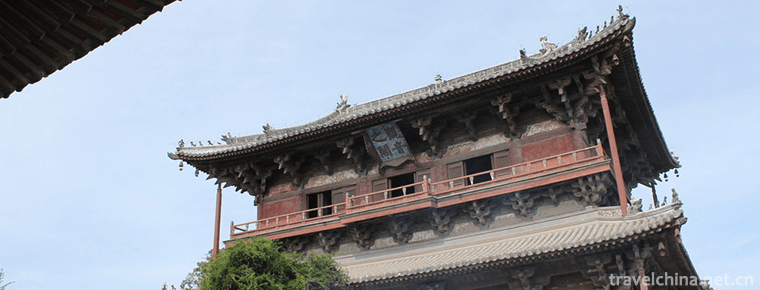
-
Tourist Area of Wu Taihu Lake in Suzhou
Wuzhong Taihu Lake Tourist Area in Suzhou is located in the southwest corner of the paradise of Taihu Lake, covering an area of 21.5 square kilometers..
Views: 220 Time 2018-12-06 -
Betelnut Valley Limiao Cultural Tourist Area
Hainan Betelnut Valley Limiao Cultural Tourist Area was established in 1998. It is located in the Ganshiling Nature Reserve at the junction of Baoting County and Sanya City.
Views: 112 Time 2018-12-12 -
Nanjiang Grand Canyon
Nanjiang Grand Canyon is located in Kaiyang County in the middle of Guizhou Plateau, 54 kilometers away from Guiyang, the capital of Guizhou Province.
Views: 112 Time 2018-12-31 -
Zhalantun Scenic Area
Zhalantun Scenic Area is located in Hulunbuir City, Inner Mongolia, including Zhalantun City and the Greater Hinggan Mountains in the northwest. The mountains are dense with pine and birch.
Views: 143 Time 2019-01-25 -
Shenyang Palace Museum
The Shenyang Palace Museum, originally a royal palace built and used in the early Qing Dynasty, was built in 1625 (five years from tomorrow, ten years after the fate of the golden emperor)..
Views: 114 Time 2019-02-08 -
Zhanqiao
Qingdao Trestle Bridge is one of the scenic spots of Qingdao Seaside Scenic Spot. It is the first national scenic spot announced by the State Council in 1982, and also the first national AAAA-level sc.
Views: 138 Time 2019-03-09 -
Zhujiajiao Ancient Town
Zhujiajiao Town, which belongs to Qingpu District of Shanghai, is located in the West and south of Qingpu District, close to Dianshan Lake Scenic Area. It is bounded by Daying in the East and Huanchen.
Views: 189 Time 2019-03-20 -
Traditional Building Techniques of Beijing Siheyuan
Beijing quadrangle traditional craftsmanship, Beijing local traditional handicraft, one of the national intangible cultural heritage..
Views: 661 Time 2019-04-04 -
Huian womens clothing
Hui'an women refer to a group of special folk women on the coast of Huidong Peninsula, Hui'an County, Quanzhou, Fujian Province. They are famous at home and abroad for their unique clothes and diligen.
Views: 197 Time 2019-05-04 -
Kirgiz costumes
"Kirgiz" means the people who live on the cliffs. Another saying is that "Kirgiz" are forty girls. This statement is wrong. Most of the Kirgiz people live in Xinjiang's Kizilesu Au.
Views: 263 Time 2019-05-09 -
Fried meat with chili
Stir fried meat with chili is a dish made with chili and streaky pork as the main ingredients and soybeans, garlic seeds, soy sauce, oil salt, monosodium glutamate and ginger as auxiliary ingredients..
Views: 212 Time 2020-03-18 -
Neijiang folk culture
Bull lantern dance is popular in Yuexi. One dressed as a shepherd boy and two dressed as cattle with cow shaped props. In the sound of gongs and drums, the shepherd boy first said doggerel to the audience to express the festival's congratulations, and then .
Views: 346 Time 2020-12-16
